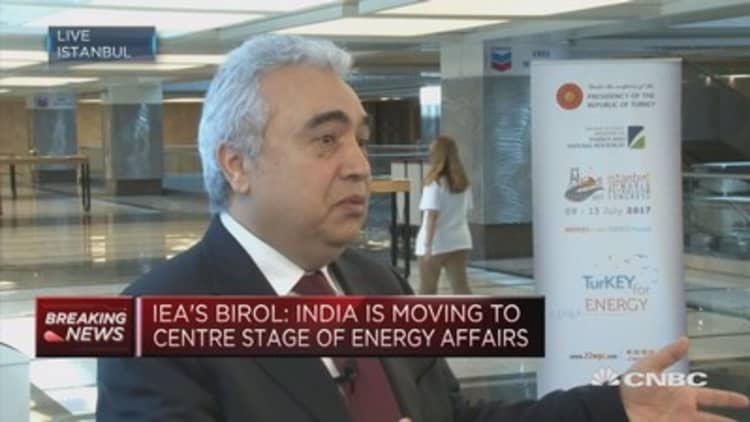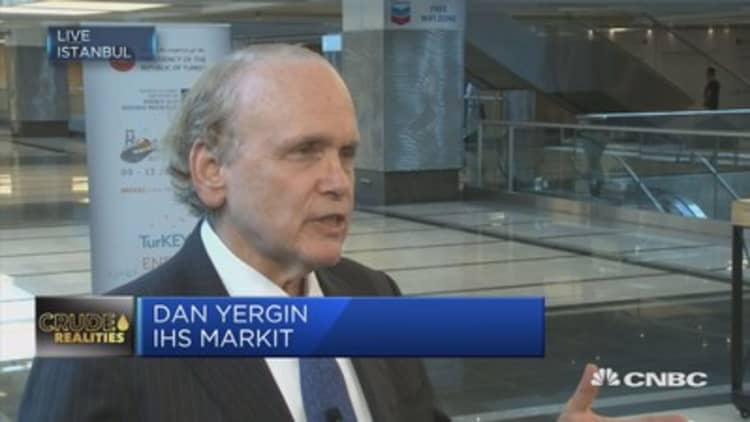Oil prices could soon fall below $40 a barrel if investors don't get a clear catalyst that prompts them to start buying the commodity, Goldman Sachs said on Tuesday.
The investment bank believes oil prices will not rally until traders see at least one of two things: further intervention from OPEC or a consistent drop in both U.S. crude oil stockpiles and the number of rigs operating in American fields.
"A failure for these shifts to materialize soon could push prices below $40/bbl as the market tests OPEC's and shale's reaction functions," Goldman analysts wrote in a research note. "Importantly, we wouldn't expect such a move to be volatile, as it is not driven by storage concerns like last year ... but the ongoing search for a new equilibrium."
The bank last week revised its three-month price target on U.S. crude to $47.50 a barrel, down from an earlier forecast of $55 a barrel. On Tuesday, U.S. West Texas Intermediate crude was trading at about $44, up from a recent low near $42.
"We continue to believe that there is another opportunity for OPEC to increase the cuts, but that this should be done in a 'shock and awe' manner, with little public announcement," Goldman said.

Goldman notes that the 6.3 million barrel drop in U.S. crude stockpiles last week was historically high. Further, June saw declines in U.S., Japanese, Singaporean and certain European inventories that were above normal seasonal levels.
However, caution is warranted in light of growing production from Libya and Nigeria, the two OPEC members exempt from the cartel's output-cut agreement. Exporters have agreed to remove 1.8 million barrels a day from the market through March, in a bid to shrink global stockpiles and boost oil prices.
OPEC has invited Libya and Nigeria to attend a technical meeting this month. Producers have reportedly begun to consider asking the two nations to limit their output.

Goldman further cautioned that this week's drop in U.S. inventories will likely be relatively small, due to seasonal trends and an anticipated jump in the amount of oil flowing from the U.S. government's strategic petroleum reserve into commercial stockpiles.
The U.S. rig count also rose last week after logging only its second decline in the previous week, frustrating market watchers hoping for a drop in drilling activity among U.S. shale oil producers.
"Given that the market is now out of patience for large stock draws and increasingly concerned about next year's balances, we believe that price upside will need to be front-end driven, coming from observable near-term physical tightness and signs of a U.S. shale activity slowdown on a sustained basis in coming weeks," Goldman concluded.


